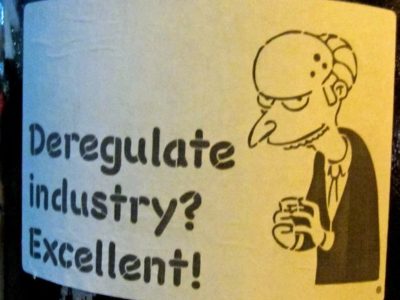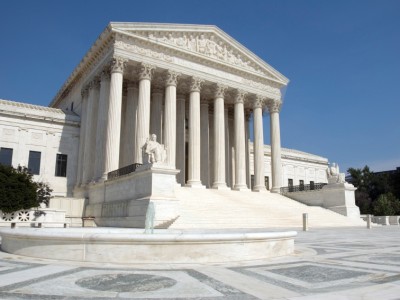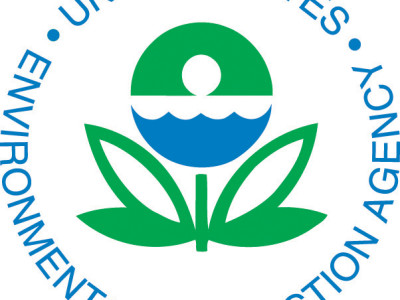Search Results for: NEPA
If At First You’re Blocked by Congress, Try, Try Again.
How much does the Congressional Review Act preclude follow-up regulation?
Most people probably never heard of the Congressional Review Act before now. This law — “CRA” to Beltway folks — is an obscure statute — previously used only once — that allows Congress to strike down an agency rule with an expedited procedure (no filibuster). The GOP is gleefully taking advantage of its control of the …
Continue reading “If At First You’re Blocked by Congress, Try, Try Again.”
CONTINUE READINGThe Owls in the Vineyard
It’s smart to take precautions against climate change. More can be done, even in the Trump era.
At night, you can hear the hooting of owls in the vineyard. The owners have deployed owls and falcons to control the pests that threaten the Kendall Jackson vineyards due to milder winters. But birds of prey aren’t the only things flying above the vineyard. There are also drones, which are used to observe small differences …
Continue reading “The Owls in the Vineyard”
CONTINUE READINGThe Ninth Circuit’s Top Environmental Law Decisions of 2016
Climate Change, Endangered Species Act, NEPA, Constitutional Challenges Dominate Court of Appeals’ Docket
In 2016, at least, the U.S. Court of Appeals for the Ninth Circuit was the most important and influential court in the nation when it comes to environmental law. That’s true for two reasons: first, the U.S. Supreme Court only issued one significant environmental law decision last year, in U.S. Army Corps of Engineers v. Hawkes …
Continue reading “The Ninth Circuit’s Top Environmental Law Decisions of 2016”
CONTINUE READINGLegal Mandates to Consider the Social Cost of Climate Change
Considering climate impacts isn’t just a good idea. It’s the law.
Many people seem to think that considering climate impacts and the social cost of carbon was just a policy decision by the Obama Administration, which Trump if he doesn’t buy the reality of climate change. But it’s not that easy. But there are strong arguments that considering climate change is mandatory. First, the whole idea of considering …
Continue reading “Legal Mandates to Consider the Social Cost of Climate Change”
CONTINUE READINGOf Pipelines, Protests, and General Permits
A fight in North Dakota reveals problems in how we permit and review large infrastructure projects
Native American tribes and environmental groups are currently protesting the completion of an oil pipeline in North Dakota. The pipeline would travel beneath the Missouri River. Tribes and environmentalists are fighting the pipeline both through litigation and also through direct action (occupying the site where the construction to complete the pipeline beneath the river would …
Continue reading “Of Pipelines, Protests, and General Permits”
CONTINUE READINGMercury Rising: The Court Reverses EPA’s Regulation
This was not a great decision for EPA, but it could have been much worse.
The Court has just now decided the Michigan case, involving EPA’s mercury regulation. As Ann Carlson explained in an earlier post, a lot was at stake in the case. The Court ruled 5-4 against EPA. This passage seems to be key to the Court’s reasoning: One would not say that it is even rational, never mind …
Continue reading “Mercury Rising: The Court Reverses EPA’s Regulation”
CONTINUE READINGAn Administrative Overreach?
The White House has proposed new guidelines on how to treat greenhouse gas emissions in environmental impact statements. Basically, the document recommends a quantitative analysis of carbon emissions whenever emissions exceed 25,000 tons per year. The proposal goes beyond a previous one in targeting resource projects such as coal mines as well as direct emissions. …
Continue reading “An Administrative Overreach?”
CONTINUE READINGWhose Benefits Count?
EPA is right to include climate impacts on foreign countries in its cost-benefit analysis of regulations.
When a regulation benefits people outside the U.S., should those benefits be counted? Or should a cost-benefit analysis include only positive and negative domestic impacts? As a recent paper by Ted Gayer and Kip Viscusi highlights, EPA has been counting the benefits of restricting carbon emissions for the entire world, not just the U.S. …
Continue reading “Whose Benefits Count?”
CONTINUE READINGCelebrating A Half Century of Federal Environmental Law!
Later in this year, we will celebrate the fiftieth anniversary of the first modern environmental statutes, the Wilderness Act of 1964. NEPA followed five years later and then in quick succession came the creation of EPA, a slew of laws regulating pollution and toxics, the Endangered Species Act, and reforms of public lands laws. It’s …
Continue reading “Celebrating A Half Century of Federal Environmental Law!”
CONTINUE READINGWhere Have You Gone, Justice Stevens?
The Supreme Court Misses Justice Stevens’ Influence & Perspective on Environmental Law
With the commencement of the U.S. Supreme Court’s new Term, it’s appropriate to note–and bemoan–the absence of a strong environmental voice on the Court these days. Until his retirement in 2010 after a quarter century on the Court, Justice John Paul Stevens ably served in that role. By contrast, none of the current justices seems …
Continue reading “Where Have You Gone, Justice Stevens?”
CONTINUE READING










